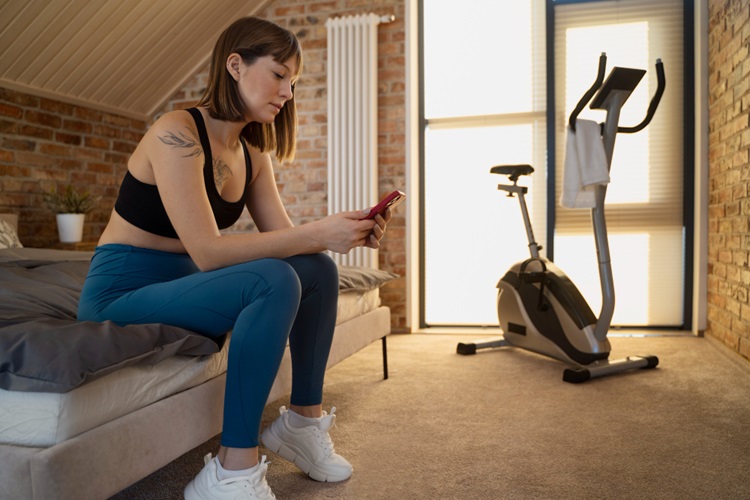In recent years, the trend of working out at home has gained significant momentum, thanks in part to the convenience and flexibility it offers. Whether you’re a seasoned fitness enthusiast or a beginner looking to adopt a healthier lifestyle, creating a home gym can be a rewarding investment. This article outlines essential improvements and considerations to help you set up an effective home gym tailored to your fitness needs.
1. Choosing the Right Space
The first step in creating a home gym is selecting an appropriate space. Here are some options to consider:
- Spare Room or Office: If you have an extra room, this can be an ideal space for a dedicated gym.
- Basement: Often spacious and away from distractions, basements can be transformed into a workout haven.
- Garage: With some modifications, your garage can serve as a functional gym area.
- Outdoor Space: If you prefer fresh air, consider setting up in your backyard or patio.
When choosing a location, ensure it has good ventilation, sufficient lighting, and enough space for your workout equipment and movements.
2. Flooring Matters
Choosing the right flooring is crucial for both safety and comfort. Consider the following options:
- Rubber Flooring: Durable and shock-absorbent, rubber flooring is ideal for weightlifting and high-impact exercises.
- Foam Tiles: These provide cushioning and are easy to install, making them great for yoga and stretching areas.
- Carpet: While softer, carpet may not be ideal for high-intensity workouts or heavy equipment.
Make sure to level the surface and address any existing issues, such as moisture or cracks, before installing new flooring.
3. Essential Equipment
When it comes to equipment, prioritize versatility and functionality. Here are some essentials to consider:
- Cardio Equipment: Options like treadmills, stationary bikes, or rowing machines can provide excellent cardiovascular workouts.
- Strength Training Tools: Invest in free weights, resistance bands, or a multi-gym system to target various muscle groups.
- Yoga and Stretching Gear: Mats, blocks, and straps can help facilitate flexibility and relaxation exercises.
- Storage Solutions: Incorporate shelves or storage bins to keep your equipment organized and easily accessible.
Tip: Start Small
If you’re on a budget, start with a few key pieces of equipment and gradually expand your collection as your fitness routine evolves.
4. Creating a Motivating Environment
A motivating workout environment can enhance your exercise experience. Here are some improvements to consider:
- Lighting: Use natural light whenever possible, but also consider adding adjustable lighting options to set the mood for different workouts.
- Mirrors: Installing mirrors can help you maintain proper form and make the space feel larger.
- Sound System: Invest in quality speakers or a sound system to play your favorite workout music or guided classes.
- Personal Touches: Decorate the space with motivational quotes, images, or artwork that inspires you to stay committed to your fitness goals.
5. Incorporating Technology
Incorporating technology can enhance your home gym experience. Consider:
- Fitness Apps: Use apps for guided workouts, tracking progress, or joining virtual classes.
- Wearable Fitness Trackers: These can help monitor your heart rate, calories burned, and overall activity levels.
- Smart Equipment: If your budget allows, invest in smart fitness equipment that can provide real-time feedback and connect to your devices.
6. Ensuring Safety
Safety should be a priority when setting up your home gym. Keep these tips in mind:
- Proper Ventilation: Ensure adequate airflow to prevent overheating during workouts.
- Safety Gear: Keep essentials like a first aid kit nearby, and use proper safety equipment, especially when lifting heavy weights.
- Floor Space: Maintain ample open space around equipment to avoid accidents.
7. Encouraging Regular Use
To get the most out of your home gym, create a routine that encourages regular workouts:
- Set a Schedule: Dedicate specific times for workouts in your calendar, just like any other important appointment.
- Mix It Up: Incorporate a variety of workouts to keep things fresh and exciting—alternate between strength training, cardio, yoga, and high-intensity interval training (HIIT).
- Invite Friends or Family: Working out with others can boost motivation and accountability. Consider inviting friends for group workouts or classes.
8. Seeking Professional Guidance
If you’re unclear on how to organize your workouts or which equipment is best for your goals, consider talking to a fitness professional. By searching for “exercise physiologist near me,” you can find qualified experts who can provide personalized recommendations and create fitness plans tailored to your specific needs.
Conclusion
Creating a home gym tailored to your needs can significantly enhance your fitness journey. By selecting the right space, investing in essential equipment, fostering a motivating environment, incorporating technology, ensuring safety, and seeking professional guidance, you can develop a workout sanctuary that encourages regular exercise and overall well-being. Whether you’re lifting weights, practicing yoga, or engaging in high-energy cardio sessions, a well-equipped home gym empowers you to achieve your fitness goals—all from the comfort of your own home.



